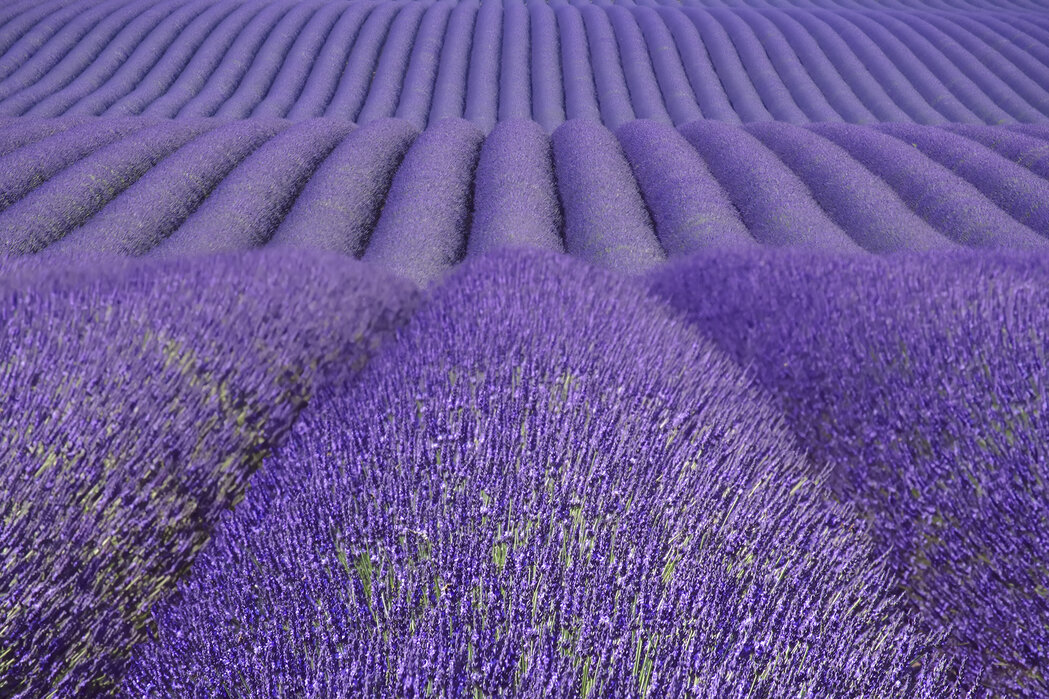Among the sun-drenched fields and stone-walled gardens of Provence, few plants evoke peace and purity quite like lavender. With its silvery foliage, upright stems, and soothing fragrance, lavender is both a feast for the senses and a symbol of calm. It has perfumed monasteries, healed wounds, and drawn bees to bloom-laden slopes for centuries.
Whether grown in garden borders, pots on balconies, or as aromatic hedges, lavender combines rustic charm with hardy elegance. Let me guide you through the care of this timeless herb, beloved by herbalists, gardeners, and poets alike.

Portrait of the Lavender
Lavender belongs to the Lamiaceae (mint) family and includes over 45 species and hundreds of cultivars. The most popular types are Lavandula angustifolia (English lavender), Lavandula stoechas (French or Spanish lavender), and Lavandula x intermedia (lavandin).
Native to the Mediterranean, lavender thrives in sunny, dry climates and is prized not only for its flowers but also for its essential oils, culinary uses, and ornamental value.
Foliage and Form
Lavender is an evergreen subshrub, typically forming low, bushy mounds. Its foliage is narrow, elongated, and silvery-gray to green, often coated in fine hairs that reflect sunlight and help conserve moisture.
Depending on the variety, lavender grows from 30 cm (1 ft) to 90 cm (3 ft) in height, with slender flower spikes rising above the foliage.
Blooms and Fragrance
Lavender blooms are slender and tightly packed into spikes, emerging in shades of purple, violet, blue, and occasionally white or pink. The flowers attract pollinators like bees and butterflies and are often harvested for dried arrangements or essential oil extraction.
Its fragrance is unmistakable—clean, floral, and herbaceous. A whiff of true lavender evokes rest, clarity, and serenity.
The Right Time to Plant and Care for Lavender
Lavender appreciates dry roots, open skies, and careful pruning. Though easy to grow, it benefits greatly from precise timing in planting and grooming, which preserves its shape and extends its life.
| Month | Planting | Flowering | Pruning |
|---|---|---|---|
| January | ❌ | ❌ | ❌ |
| February | ✅ (mild climates) | ❌ | ✅ (light shaping) |
| March | ✅ | ❌ | ✅ (formative) |
| April | ✅ | ✅ (early bloomers) | ❌ |
| May | ✅ | ✅ | ❌ |
| June | ❌ | ✅ | Deadheading only |
| July | ❌ | ✅ | Deadheading only |
| August | ❌ | ✅ | ✅ (post-bloom shaping) |
| September | ✅ (mild regions) | ✅ (late bloomers) | ✅ |
| October | ✅ (warm climates) | ❌ | ✅ |
| November | ❌ | ❌ | ❌ |
| December | ❌ | ❌ | ❌ |
✅ = Recommended ❌ = Not advised
Ideal Watering, Sunlight, and Environment for Lavender
Watering
Lavender is drought-tolerant once established. Water young plants regularly during the first growing season, but allow the soil to dry out between waterings. Overwatering is one of the most common causes of failure in lavender cultivation. Mature lavender typically needs watering once every two weeks during dry spells.
Sunlight
Lavender thrives in full sun—a minimum of 6 to 8 hours daily. Without sufficient light, the plant may become leggy and produce fewer blooms.
Indoor vs Outdoor
Lavender is best suited to outdoor environments, especially where it can bask in unfiltered sunlight and enjoy good air circulation. While it can be grown indoors in containers, it requires a very sunny window or supplemental grow light and well-ventilated conditions.
Temperature
Lavender grows well in USDA zones 5–9, depending on variety. English lavender is more cold-tolerant, while French and Spanish varieties prefer milder winters. All lavenders dislike humid, wet conditions.
Ideal Soil Conditions for Growing Lavender
| Soil Feature | Optimal Condition | Why It Matters |
|---|---|---|
| Soil Type | Sandy or loamy, with low fertility | Mimics lavender’s native Mediterranean terrain; prevents excessive growth. |
| Texture | Loose, gritty, and well-drained | Allows water to flow through and air to reach roots. |
| Drainage | Excellent | Lavender roots rot easily in waterlogged soil. |
| Moisture | Dry to moderately moist | Dry conditions enhance oil concentration and bloom strength. |
| Soil pH | Neutral to slightly alkaline (6.5–7.5) | Helps maintain lavender’s aromatic oil production and disease resistance. |
Common Problems & Solutions
| Issue 🐾 | Symptoms 🔍 | Solutions 🛠️ |
|---|---|---|
| Root Rot 💧 | Wilting, yellowing leaves, mushy roots | Improve drainage, reduce watering, raise bed or plant in pots |
| Leggy Growth 🌿 | Long, weak stems with sparse foliage | Prune yearly; ensure full sun exposure |
| Powdery Mildew 🌫️ | White coating on leaves | Increase air circulation, avoid overhead watering |
| No Blooms ❌🌸 | Lush foliage but no flowers | Avoid high-nitrogen fertilizer; provide more light |
| Leaf Yellowing 🍃 | Poor soil drainage or lack of nutrients | Check pH, amend soil, reduce water |
Resilient yet refined, lavender is a gardener’s ally and a sensory delight. From garden borders to fragrant sachets tucked in drawers, this timeless plant continues to soothe, scent, and summon bees with every breeze it meets.